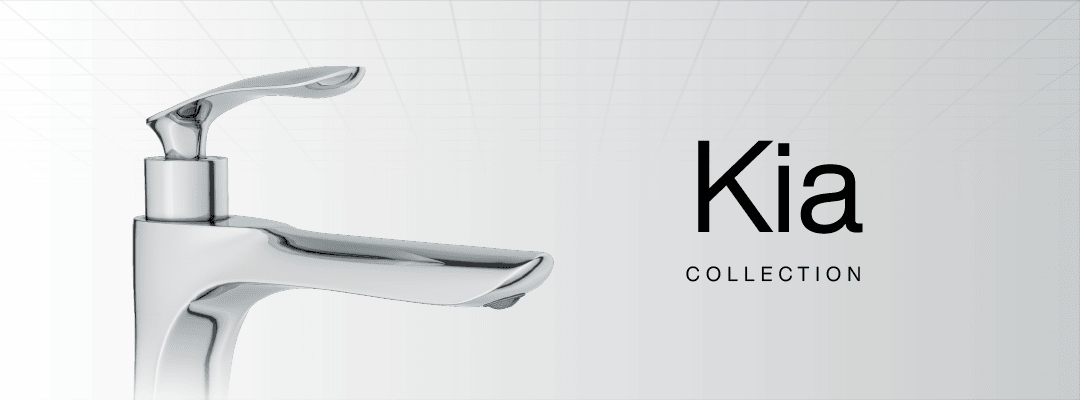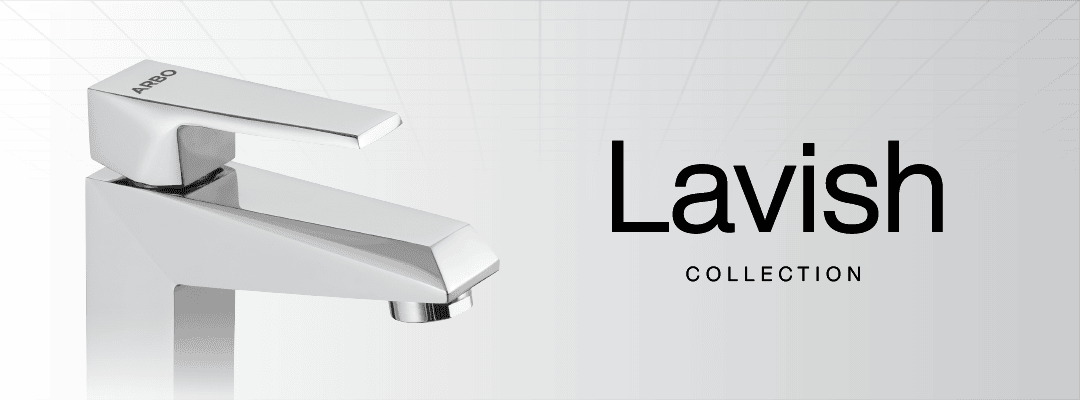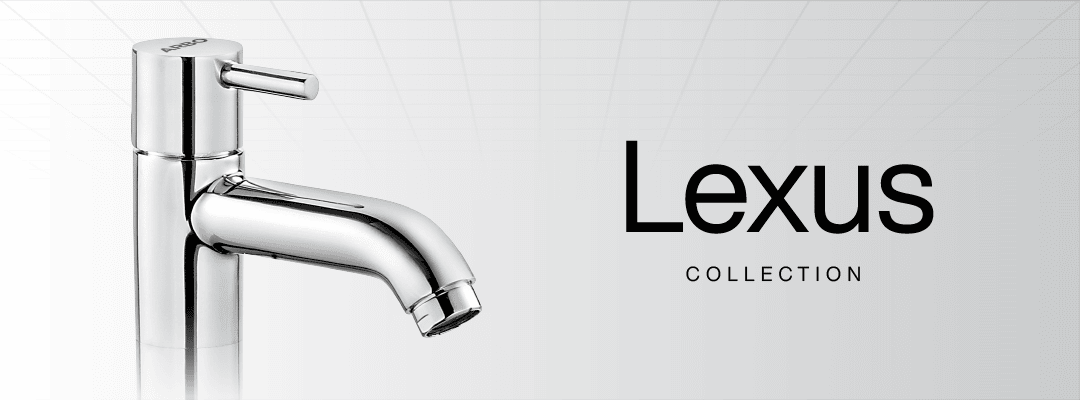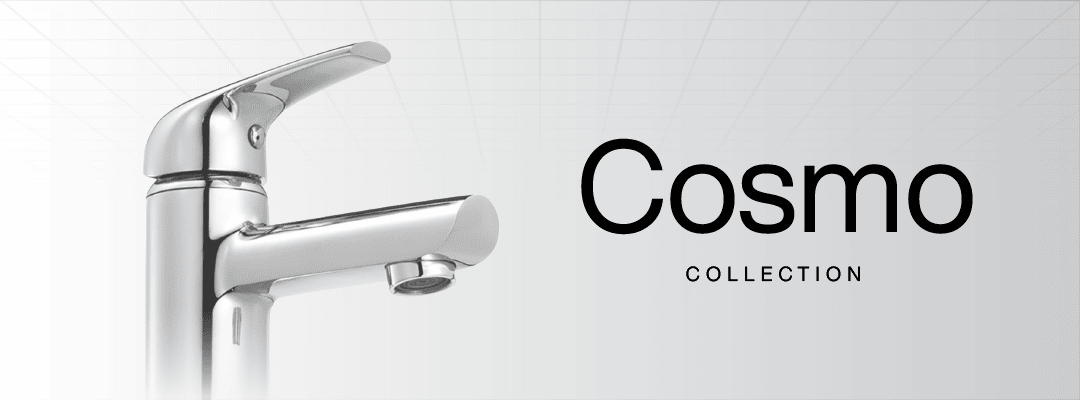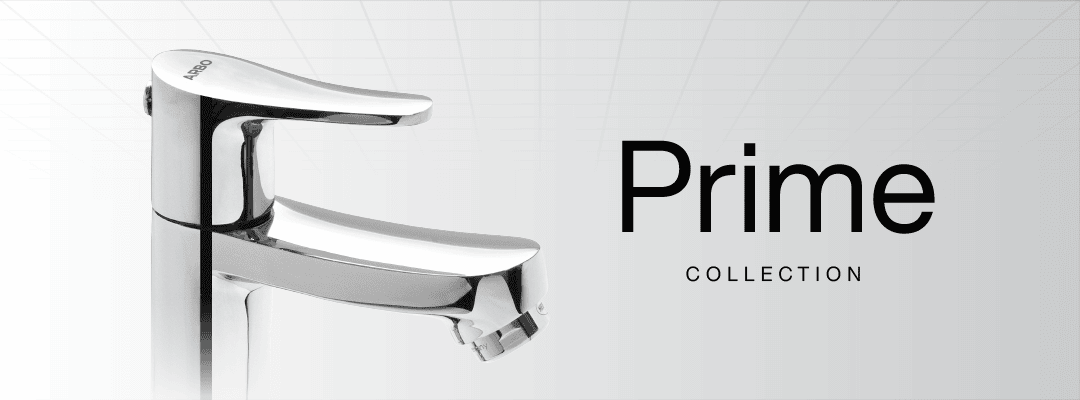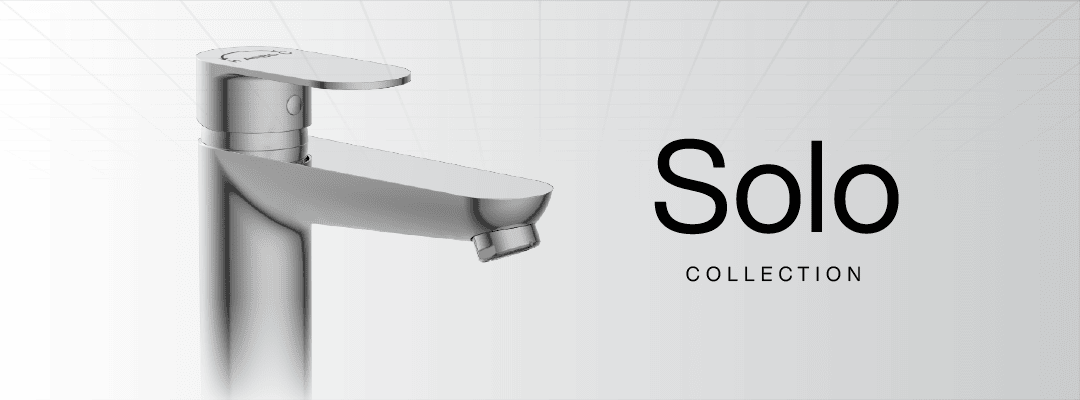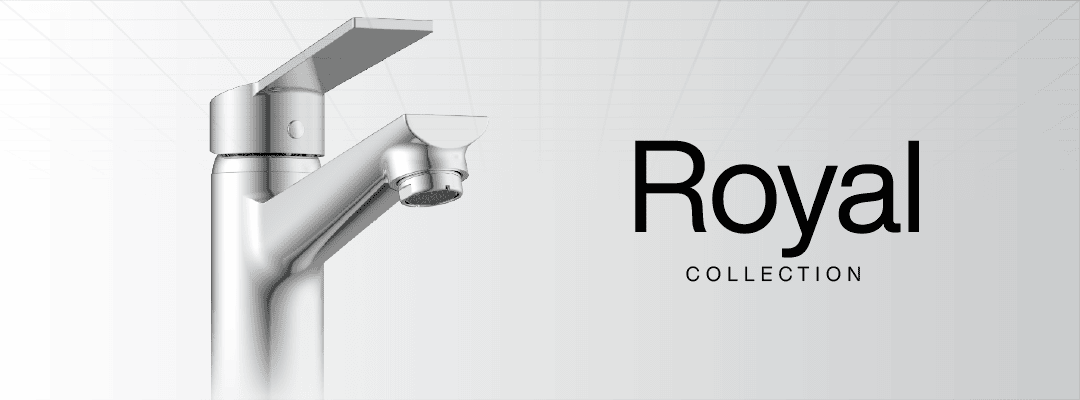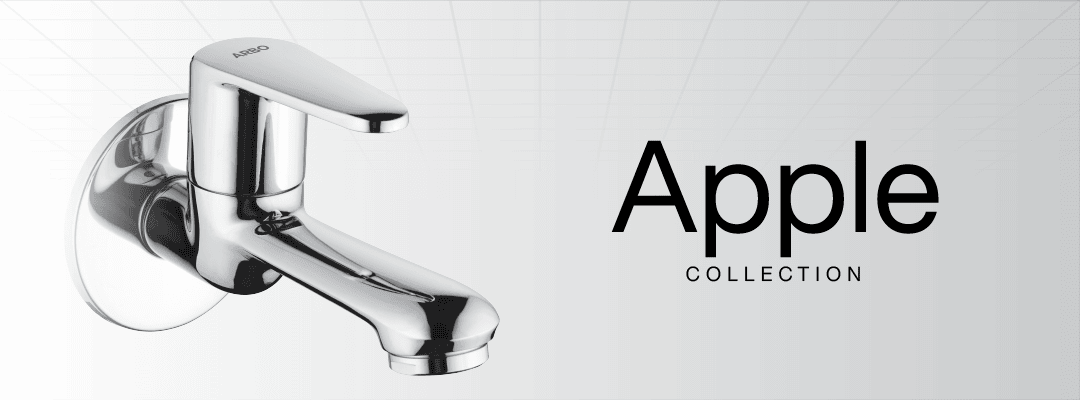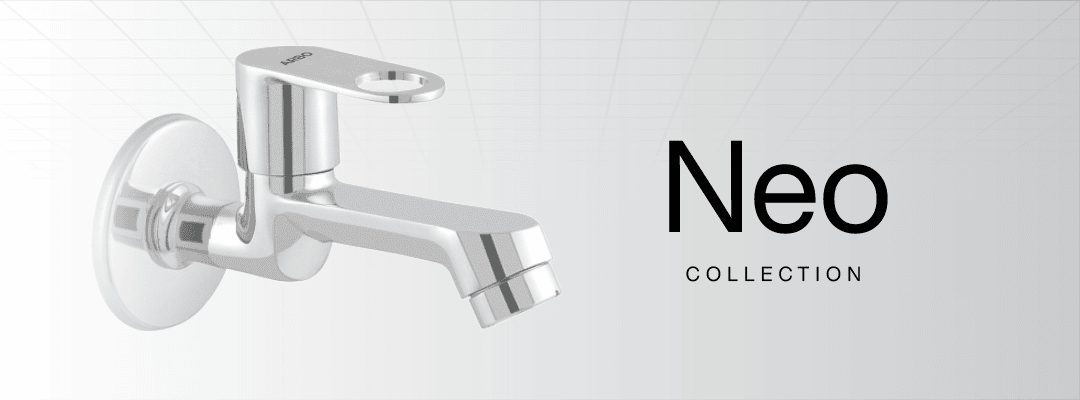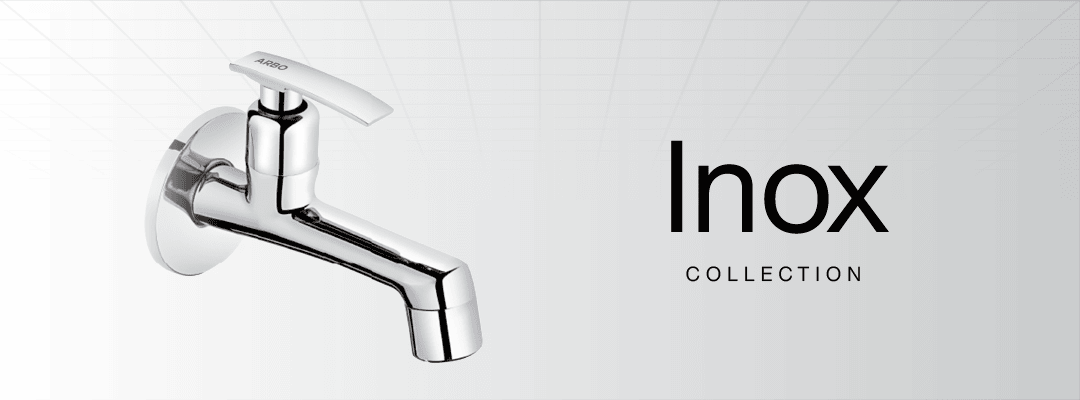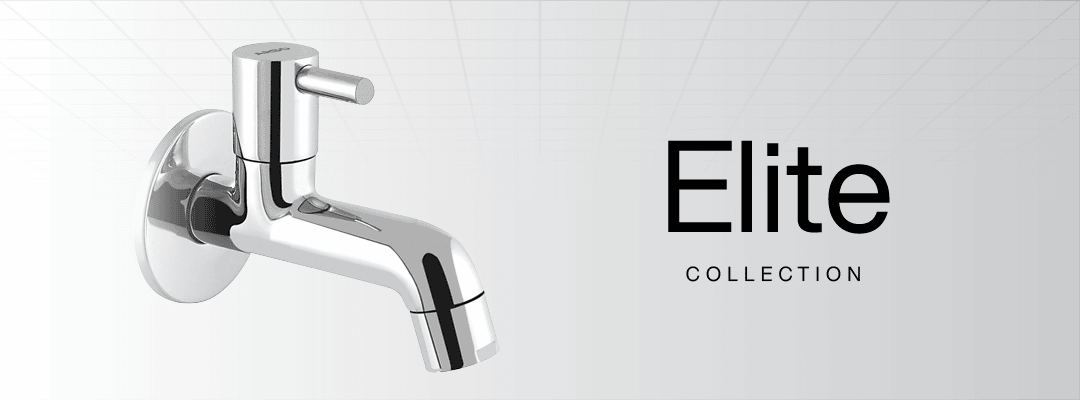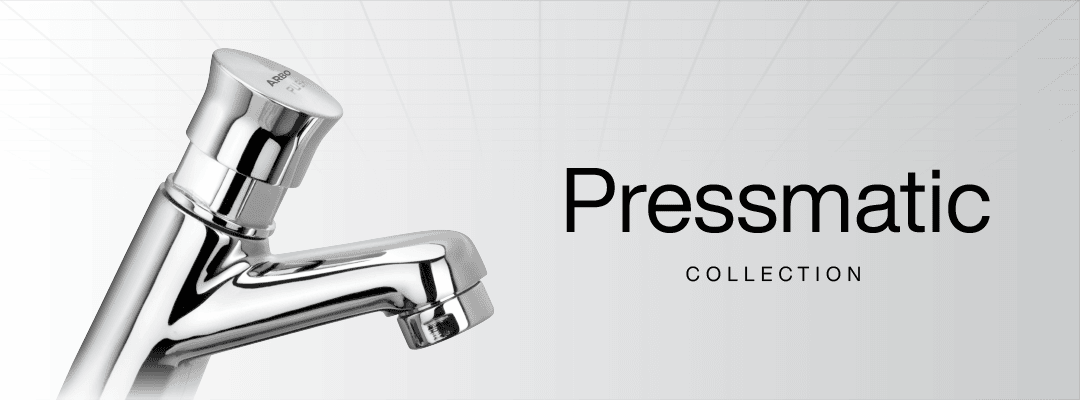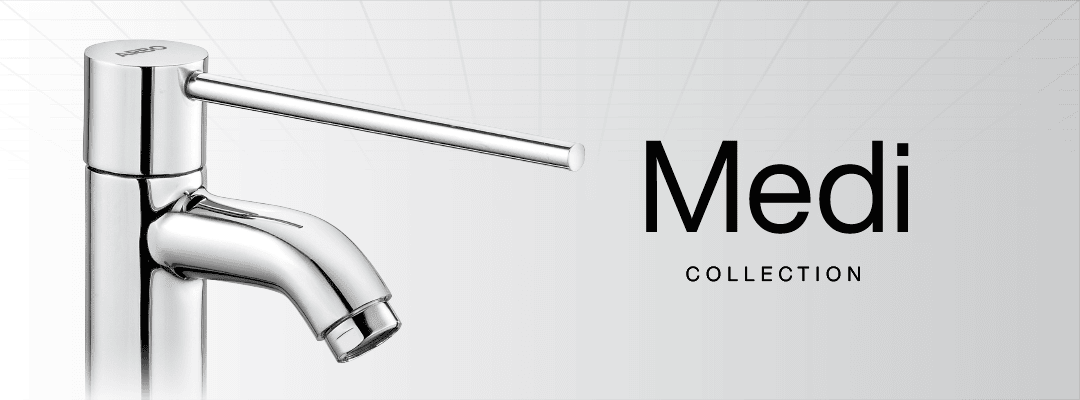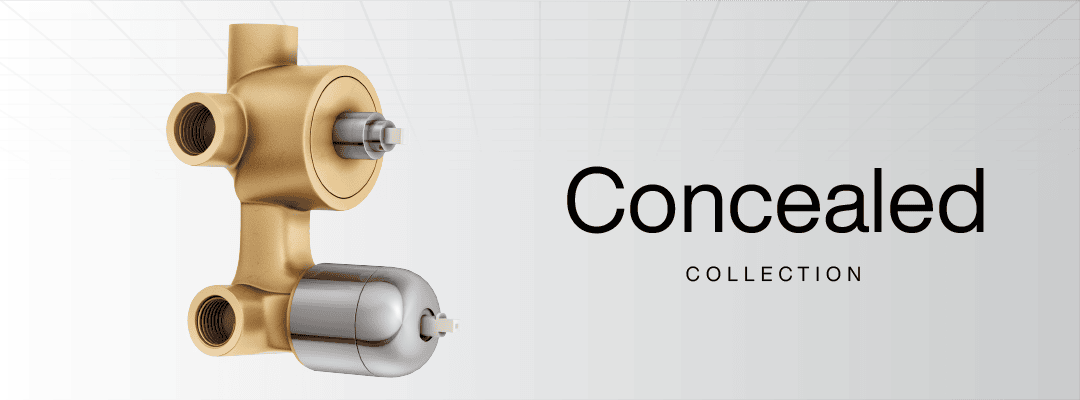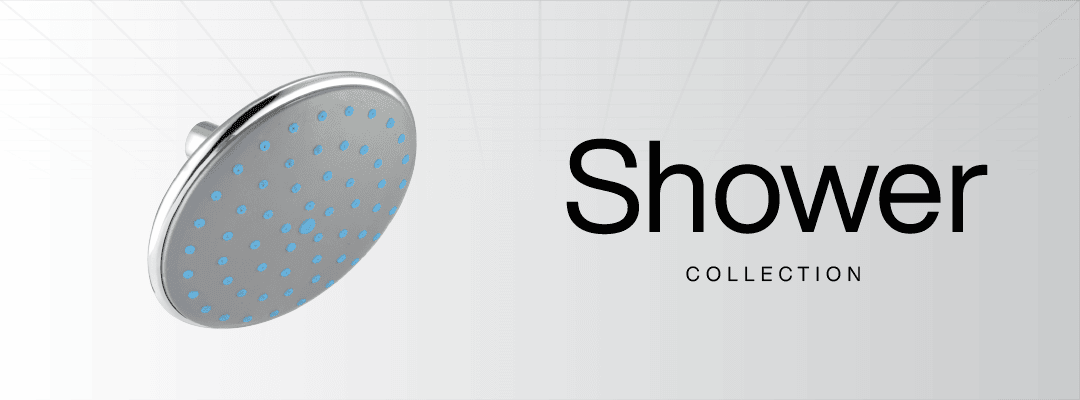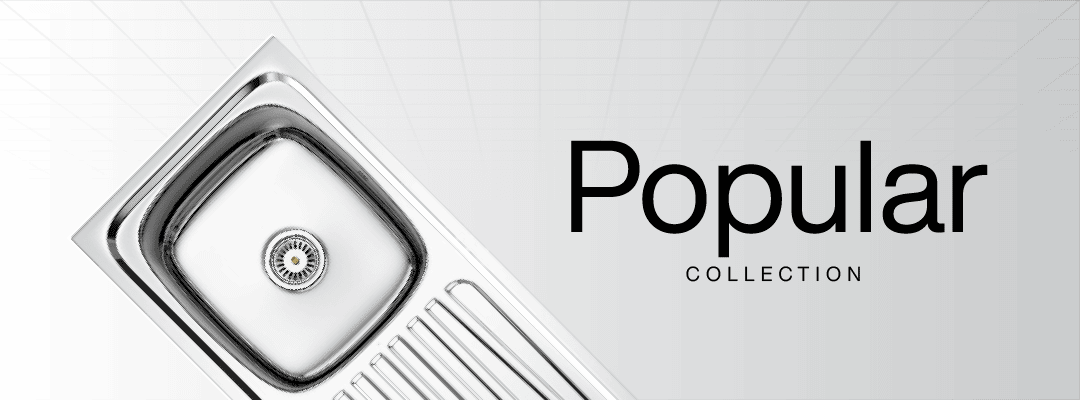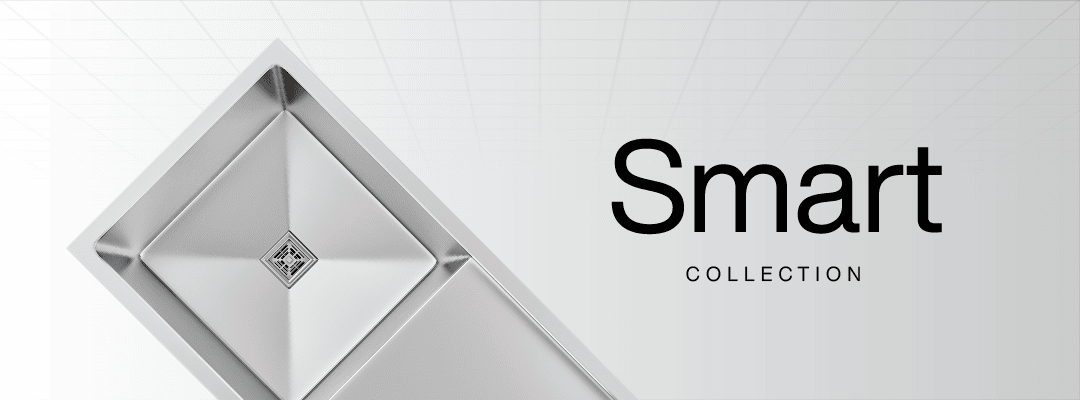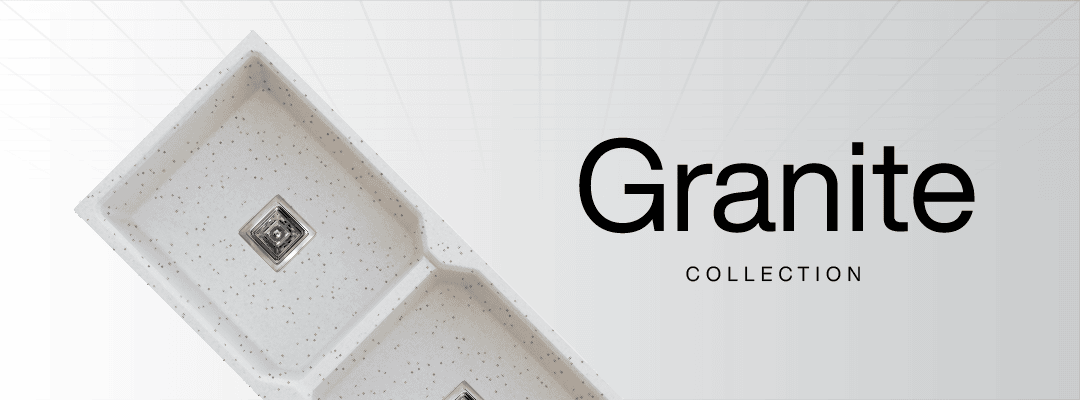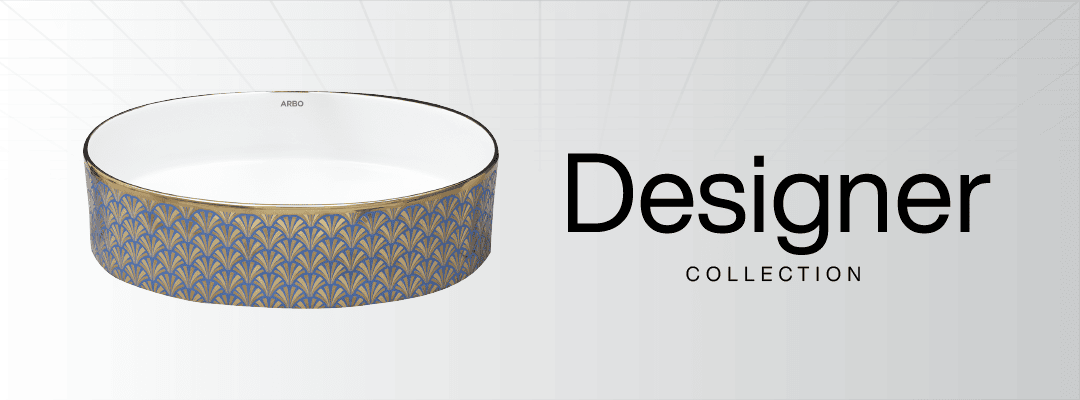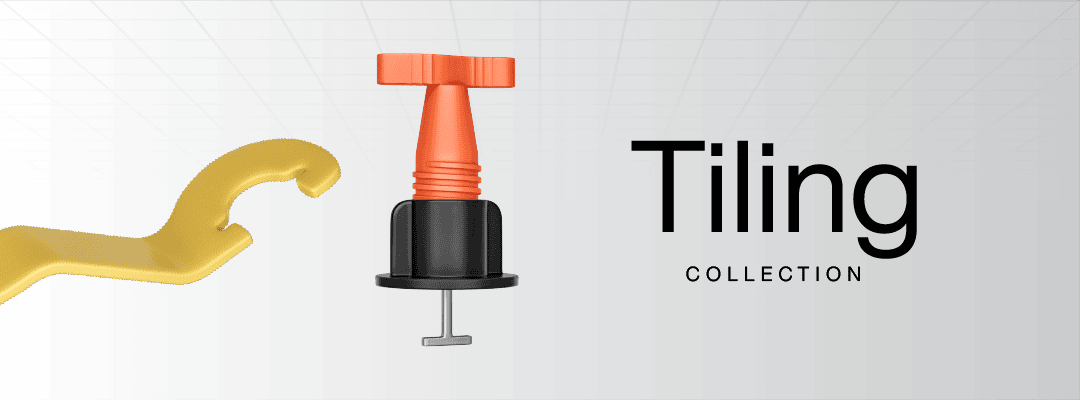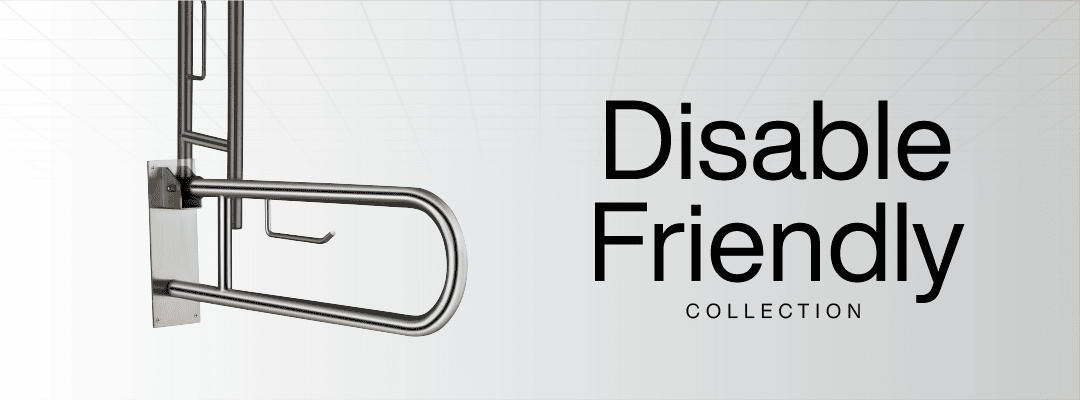General Plumbing Features
- Fixture: Anything that accepts or discharges water or wastewater.
- Flow Rate: Measurement of water flow through a plumbing system in gallons per minute or hour.
- Hard Water: Natural water containing impurities in various proportions.
- Scale: A thin coating or layer, usually of calcium, on the bottom of a tank or interior parts that may prevent heat transfer.
- Soft Water: Water that has been treated so that it has low mineral content.
Faucets
- Pillar Tap: A short, vertical faucet mounted on a basin or countertop. Pillar taps typically have a single inlet for cold or hot water and are operated by a simple handle or knob on top.
- Bib Tap (Bib Cock): A wall-mounted faucet with a nozzle that usually points downward, commonly used for garden hoses or utility areas. It provides a single flow of water (usually cold) and often includes a threaded spout to attach hoses.
- Angle Cock (Angle Valve): A 90-degree shut-off valve for water, usually installed at the junction of a water supply and a faucet or toilet. It allows you to control or stop water flow to a fixture and typically has an angular shape with an on/off handle.
- Sink Cock: A wall-mounted faucet for sinks, often seen in kitchens or laundry areas. It usually has a swinging (pivoting) spout and is connected to the wall plumbing, delivering water into the sink from above.
- Swan Neck Faucet: A type of faucet with a high, elegantly arched spout resembling a swan’s neck. This design provides extra clearance above the sink, making it easier to fill large pots or wash hands without the faucet being in the way.
- Sink Mixer: A faucet designed to mix hot and cold water, typically used for kitchen sinks. Sink mixers often have two handles (for hot and cold) or a single lever, and can be wall-mounted with connecting legs and a Swivelling spout to direct mixed water into the sink.
- Basin Mixer: A mixing faucet for bathroom basins that combines hot and cold water into one outlet. Basin mixers are usually deck-mounted (center hole installation) on the basin and often use a single lever or a pair of handles to control water temperature and flow.
- Wall Mixer: A two-inlet wall-mounted faucet that mixes hot and cold water and usually has an integrated spout. Common in bath areas, a wall mixer often includes an attachment or diverter knob to send water either to an overhead shower or to its own spout (for bucket filling or tub use).
- Diverter: A valve mechanism that redirects water flow from one outlet to another. In bath/shower systems, a diverter is used to switch water between outlets (for example, from a tub spout to an overhead shower or hand shower). Diverters can be a part of a faucet system (e.g., in wall mixers or shower mixers) and are often single-lever operated.
- Bathtub Spout: A spout specifically for bathtubs, delivering water low into the tub for filling. It is usually wall-mounted and may be connected to a diverter system – for instance, pulling a knob on the spout might divert water to the shower. Its design allows a high flow rate to fill the tub quickly.
- Control Valve: A general term for a valve that controls water flow in a plumbing system. In this context, it often refers to a stop valve or shut-off valve (similar to an angle cock) used in bathrooms to regulate water supply to fixtures. It allows maintenance or control of water pressure by opening or closing the valve as needed.
- Ceramic Cartridge: A key internal component of modern mixer faucets that controls water flow and mixing. It consists of hard ceramic discs that slide to open, close, or mix hot and cold water. Ceramic cartridges provide smooth handle operation and durability (preventing drips) since the ceramic discs form a tight seal when aligned
- Aerator: A small mesh filter or insert at the tip of a faucet spout that mixes air into the water stream. Aerators help create a smooth, splash-free flow and can reduce water usage while maintaining pressure. They often screw into the faucet mouth and can be removed for cleaning or replaced to alter the flow characteristics.
- Single Lever Faucet: Any faucet that uses one combined handle to control both the water flow and temperature. Lifting or lowering the lever adjusts the volume of water, and moving it side to side controls the mix of hot and cold. This design is convenient and found in many modern sink and basin mixers for easy one-handed operation.
- Central Hole Basin Mixer: A one-piece fitting with two handles. Hot and cold water are mixed and delivered through a single spout.
- Deck / Table Mounted Tap: A tap that sits on the rim of a washbasin or bath (as opposed to being wall mounted).
- Pop-Up Waste: An alternative to traditional plugs, a pop-up waste comprises a stopper connected by levers to a control knob on the tap.
- Quarter Turn Taps: Taps which can be turned fully on or off by turning the handle through just 90 degrees.
- Reducer: A fitting that allows pipes of different sizes to be joined together.
- Relief Valve: A valve that opens to relieve excess temperature and/or pressure in the system.
- Stop Cock: A simple, hand-operated tap that turns the water flow off and on.
- Tall Boy: A single lever basin mixer with a higher spout.
- Three Hole Mixer Tap: A faucet fixture with separate hot and cold water handles to blend water through a third central spout.
- Three-Handle Faucet: A faucet with separate handles for hot, cold water, and a diverter.
- Two-Handle Faucet: A faucet with separate handles to control hot and cold water temperature.
- PVC (Polyvinyl-Chloride): Usually refers to a rigid white plastic pipe used for bathroom drain, waste, and vent pipes.
- Flange: Non-threaded piece that goes over the pipe coming out of the wall.
- Wall Mixture Non-Telephonic: Exposed wall-mounted mixer that delivers water through a spout only.
- Wall Mixture 3-in-1: Exposed wall-mounted mixer that can divert water to three different outputs - spout, overhead shower, and hand shower.
- Thermostatic: Mixer taps that automatically maintain a constant temperature irrespective of variations in water pressure.
- Thermostatic Bath & Shower Mixer: Gives precise and regulated control of the water temperature and flow.
- 3-Inlet Diverter: Used where a customer has 3 pipelines installed in the bathroom (Hot, Cold, and Fresh).
- Hi-flow Diverter: It delivers a high-flow rate to quickly fill your bath.
Sanitaryware
- One Piece Closet: A toilet where the bowl (seat) and the cistern (tank) are molded together as a single unit. This one-piece design has no separate tank bolted on, which gives it a seamless look and often makes cleaning easier. The flush mechanism and bowl are integrated, and the whole closet mounts to the floor as one piece.
- Coupled Closet (Two-Piece Toilet): A toilet consisting of two separate pieces – the ceramic bowl and a separate water cistern that bolts on top or behind it. Also called a close-coupled WC, the tank and bowl are joined during installation. This is a common design where the water closet’s tank can be replaced or serviced independently of the bowl.
- Wall Hung Closet: A toilet bowl fixed to the wall, suspended above the floor with no base touching the ground. The cistern is usually concealed inside the wall (or a frame) and only the bowl and flush actuator are visible. Wall hung closets save floor space and make cleaning the bathroom floor easier, as there is no pedestal or footprint.
- Water Closet (WC): A general term for a toilet fixture. In the context of the site, it often refers to Western-style toilets (as opposed to squat pans). A water closet typically includes a bowl and a flushing mechanism (tank or flush valve) – essentially any flush toilet designed for seated use.
- Orissa Pan (Squatting Pan): A type of floor-mounted ceramic pan designed for squat-style use. Common in South Asian bathrooms, an Orissa pan is level with the floor and has raised footrests on either side. The user squats over it, and it flushes like a toilet. It connects to the plumbing via a trap and is usually made of the same ceramic material as other sanitaryware.
- Urinal: A sanitaryware fixture designed for urination while standing. Urinals are typically wall-mounted for male users, with a drain at the bottom and often an automatic or manual flush. They can be individual bowl-like fixtures or partitioned stalls and are common in public or commercial men’s restrooms.
- Wash Basin: A general term for a sink in a bathroom used for washing hands and face. It typically includes a bowl-shaped fixture with a drain. (On the site, various types of wash basins are offered – see specific terms like table top basin, wall hung basin, etc.)
- Table Top Basin: A basin designed to sit on top of a counter or vanity surface. It resembles a bowl or vessel that is fully exposed above the counter, with only the drain connecting through the countertop. Table top basins are a stylish choice, as the entire shape of the basin is visible, and they often require tall pillar taps or wall-mounted faucets due to their above-counter height.
- Counter Basin (Under-Counter Basin): A basin intended to be installed integrated with a countertop. Often, this means it is mounted from below (under-counter) or has a rim that sits flush with the counter. The result is a sink where the bowl is at or below counter level, giving a clean look and making it easy to wipe water from the counter straight into the basin.
- Wall Hung Basin: A sink basin that is fixed directly to the wall without any pedestal or cabinet supporting it from below. It is anchored with bolts and brackets, leaving the floor space beneath it open. Wall hung basins are great for saving space and providing accessible design (including for wheelchair access), though they may have visible plumbing unless concealed by design or with a bottle trap cover.
- Pedestal Basin (Wash Basin with Pedestal): A two-part basin unit consisting of the basin itself and a supporting pedestal leg. The basin mounts to the wall and sits on the pedestal, which bears part of the weight and conceals the drain pipe and water supply lines. The pedestal is a ceramic stand that touches the floor, giving a classic look and hiding unsightly plumbing.
- One Piece Basin: A basin that comes as one continuous piece with an attached leg or stand (as opposed to a separate pedestal). In other words, the basin and its support are molded together. This design offers a seamless appearance – for example, a designer one-piece basin might have a half-length integrated pedestal that is part of the basin’s shape. It simplifies installation since there are not multiple pieces to assemble.
- Soft Close Seat Cover: A toilet seat and lid mechanism that closes gently without slamming. It features special hinges that slow down the closing action, so if you push the seat or lid shut, it will descend quietly on its own. Soft close seats prevent noise and reduce wear or damage to the toilet bowl from frequent dropping of the seat.
- Dual Flush: A flushing mechanism that offers two flush volume options – typically a full flush for solid waste and a half or reduced flush for liquid waste. Dual flush systems are usually operated by a split button on the cistern top or a lever with two settings, helping save water by using a smaller amount when appropriate. (By contrast, a single flush toilet releases the same full tank volume every time it’s flushed.)
- S-Trap: A type of toilet or basin outlet configuration where the drain pipe exits vertically downward from the fixture and then curves, resembling an “S” shape. An S-trap toilet is designed to drain through the floor. The trap creates a water seal to block sewer gases, and common S-trap toilets have specific outlet set-outs (like 4-inch or 9-inch from the wall, indicating how far from the wall the floor drain center is).
- P-Trap: A type of outlet configuration where the drain exits horizontally through the wall behind the fixture, making a “P” shaped curve. A P-trap toilet or sink has a waste pipe that goes out the back. The P-trap also retains water to seal against odors. This trap style is used when the plumbing goes into the wall rather than the floor.
- Washdown Toilet: A toilet flushing design in which water from the cistern flows into the bowl rapidly and pushes waste through the trap using gravity and direct force. A washdown closet has a simpler trap way and relies on the mass of water to “wash” waste out. It usually has a larger trap opening but can sometimes leave behind some residue, and the water level in the bowl is typically lower.
- Siphonic Toilet: A toilet design that uses siphon action to pull waste out of the bowl. In a siphonic closet, the trap way is designed in a specific shape and usually completely fills with water during a flush, creating a siphon vacuum that sucks the contents of the bowl down. This results in a cleaner bowl (less streaking) and a quieter flush, though the trap ways are narrower. The bowl’s water spot is larger in siphonic designs, and they often have a distinctive gurgle at the end of the flush when the siphon breaks.
Showers
- Overhead Shower: A showerhead mounted above the user, either on the wall or ceiling, that directs water downward like rain. Overhead showers come in various shapes (round or square heads, for example) and sizes (4 inch, 6 inch, 8 inch, etc.). Many are rainfall showers, meaning they are designed to distribute water broadly and gently for a rain-like experience.
- Shower Arm: The pipe that connects an overhead showerhead to the water supply. A shower arm can be wall-mounted (extending outward from the wall to hold the showerhead) or ceiling-mounted (dropping down from the ceiling). They come in different lengths and shapes (some have a 45° downward bend, for instance) to position the showerhead appropriately over the user.
- Hand Shower (Handheld Shower): A shower spray head attached to a flexible hose, which can be held in the hand. Hand showers usually dock on a holder or slide bar when not in use. They are versatile for rinsing, cleaning the shower area, or for users who need a movable water source. Many hand showers have multiple spray settings (from gentle mist to massage jet) and are connected to the plumbing via a diverter or directly to a mixer.
- Body Jet (Body Shower): Small spray jets installed in the shower walls aimed at the body. Body jets (or body showers) provide horizontal streams of water for massaging or rinsing the body from the sides. They are often used in multiples as part of a shower panel or custom spa shower system. Each body shower jet can usually be adjusted in direction, and some have specific spray patterns (e.g., normal spray or mist spray)
- Exposed Shower Pipe: A vertical pipe system that mounts on the bathroom wall and carries water to an overhead shower, often with an adjustable height feature and a holder for a hand shower. “Exposed” means the pipe and components are visible (not built into the wall). This setup typically connects to a bath mixer or shower mixer at the bottom. It allows you to have an overhead shower without concealing plumbing in the wall, and often includes a sliding rail for the hand shower so it can move up or down.
- Rainfall Shower Head: A style of overhead shower head that is usually larger and designed to distribute water evenly across many small nozzles, producing a gentle, rain-like spray. Rainfall shower heads are often flat and broad (sometimes 8–12 inches across or more) and provide a drenching but soft shower experience. They may be ceiling-mounted or on a long shower arm to pour directly downwards.
- Waterfall Shower: A shower outlet or mode that sends water out in a wide, thick sheet – similar to standing under a small waterfall. Some multi-function overhead showers include a “waterfall” setting, where water pours from a slot as a cascade. Waterfall shower outlets are typically horizontal openings rather than perforated spray nozzles, creating a different sensation useful for rinsing and massage.
- Multi-Function Shower: Refers to a shower head (overhead or hand shower) that offers different spray modes or settings. For example, a three-function overhead shower might have modes like regular rain, mist, and massage or waterfall. Users can switch modes by twisting the shower face or pressing a button, changing the water flow pattern for a customized shower experience.
- ABS (Thermoplastic): In product descriptions, ABS refers to a sturdy plastic material (Acrylonitrile Butadiene Styrene) commonly used in shower heads and hand showers. ABS is lightweight, corrosion-proof, and can be molded into various shapes – many affordable or slim shower heads use ABS chrome-plated plastic for the shell and nozzles.
- Stainless Steel 304 (SUS 304): A high-grade stainless steel alloy used in bathroom and kitchen fixtures. When you see S.S. 304 in a shower or faucet description, it means the part is made of type 304 stainless steel, prized for its excellent corrosion resistance and durability in wet environments. For showers, stainless steel 304 is often used in higher-end rain shower heads or shower arms (and in kitchen sinks), ensuring a long service life without rusting.
Kitchen Sinks
- Single Bowl Sink: A kitchen sink with one open basin. It is one continuous bowl without any divider, ideal for washing large dishes or oven trays that need the full space. Single bowl sinks are common in compact kitchens or where a large uninterrupted washing area is preferred.
- Double Bowl Sink: A kitchen sink that has two separate bowls (compartments), usually side by side. This allows multitasking – for example, one bowl can be used for washing and the other for rinsing or drying. Double bowl sinks can be equal-sized or have one bowl larger than the other, and they make it convenient to separate uses (like prepping food in one side and cleaning dishes in the other).
- Drainboard Sink: A sink design that includes an attached flat surface with grooves (drainboard) on one side of the bowl. The drainboard provides an area for placing washed dishes or vegetables, allowing water to run off back into the sink. Sinks with drainboards are useful for air-drying items and keeping the countertop dry, essentially combining a sink and a little counter drainage area in one unit.
- Modular / “Smart” Kitchen Sink: A modern style of kitchen sink that integrates additional features and accessories for convenience. These sinks often come with all-in-one setups that might include built-in faucet functions (like a waterfall spout or a separate filtered water faucet), cutting boards or colanders that fit on the sink, and other enhancements. The term "smart" indicates the sink can handle multiple tasks – for example, some ARBO smart sinks feature piano button controls for different water modes and an RO faucet for drinking water
- Handmade Sink: A stainless steel sink that is manually crafted (welded and folded) from steel sheets rather than stamped by machine. Handmade sinks typically have more straight, sharp corners and are made of thicker steel (often high-grade like SS 304). They are known for their durability and capacity, and often have a square or rectangular design with clean edges (since the metal isn’t stretched by a press).
- Quartz Sink (Granite Composite Sink): A type of sink made from a mixture of natural quartz stone and acrylic resin (often called a granite composite). These sinks are molded in various colors (black, grey, white, etc. as seen on the site) and offer high durability. Quartz sinks have a stone-like appearance and are resistant to scratches, stains, and heat, making them a popular alternative to stainless steel. They also help reduce noise from dishes due to the composite material’s density.
- RO Faucet (Water Filter Faucet): A small additional faucet usually installed on the sink or countertop to dispense purified drinking water from a reverse osmosis (RO) or other water filter system. In the context of ARBO’s Clean Water or All-in-One smart sinks, an RO faucet is integrated so you can get drinking water at the sink separate from the main tap. It is typically a single-temperature faucet (only connected to the filtered water line) and often has a slim design.
- Piano Button Controls: A feature on some advanced kitchen sinks where buttons (resembling piano keys) are used to control various water functions. These buttons might turn on a particular water outlet or mode – for example, one button could activate a waterfall spout, another could switch on a spray or a pot-filler, etc. The term comes from the flat, key-like appearance of the controls. Sinks with piano buttons let the user easily switch between multiple in-sink features without manually adjusting plumbing each time.
- Waterfall Spout (for Sink): A faucet or outlet on a kitchen sink that releases water in a broad, flat stream instead of a usual aerated jet. In ARBO’s smart sinks, a waterfall feature means water pours in a sheet, useful for quickly rinsing produce or gently filling containers. It’s often paired with a button control – press the “waterfall” piano button and a blade of water cascades into the sink, creating a visual effect and practical way to rinse items over a wide area.
- FlexFlow: (As mentioned in some product names) Indicates a special flow feature or technology included with the sink. In context, a name like “Piano Button Flexflow” suggests the sink has a flexible flow control or a multi-mode faucet sprayer. Essentially, FlexFlow would allow different water flow styles (perhaps a concentrated spray vs. a gentle flow) at the press of a button, enhancing the sink’s versatility. (This term is specific to the product and implies advanced water flow options.)
- Stainless Steel 304 Sink: A sink made from SUS 304 stainless steel, a premium grade of steel ideal for kitchen use. Type 304 stainless steel resists rust and corrosion even with constant exposure to water, and it doesn’t easily dent or crack. Sinks advertised with SS-304 are highlighting that they use high-quality steel, which means the sink will have a long life and maintain its shine (if polished) or uniform finish (if brushed). Most steel sinks, especially the handmade and high-end ones, use 304 grade steel for reliability.
Tile Tools
- Tile Spacer: A small plastic cross or T-shaped piece used to evenly gap tiles during installation. Tile spacers are placed between tiles (for floor or wall tiling) to ensure consistent spacing, which will later be filled with grout. They come in various thicknesses (e.g., 2mm, 3mm, 5mm) to achieve the desired grout line width. After the tile adhesive sets, spacers are removed, leaving equal gaps for grouting, resulting in a neat, uniform tile layout.
- Tile Levelling System: A set of tools and components that helps keep tiles flush (level) with each other while they set, preventing uneven edges (lippage). The system typically consists of tile levelling clips that slide under the tile edges and some form of wedges or caps that apply pressure to pull adjacent tiles to the same height. Using a tile levelling system ensures a flat surface across a tiled area, especially useful for large format or heavy tiles that are prone to slight settling or unevenness during installation.
- Tile Levelling Clip: A piece of the levelling system – it’s a plastic clip that goes under the edge of a tile with a small stem that sticks up between tiles. When you lay the next tile, the clip’s stem is sandwiched between them. You then use a wedge or cap on that stem to tighten the two tiles level. Once the tile adhesive cures, the exposed part of the clip is broken off, leaving the tiles perfectly even. Clips are often sold in different thicknesses (1mm, 2mm, 3mm, etc.) which also determine the grout line, and they are usually one-time use (you snap them off to remove). (There are also screw-type levelling clips that work with reusable caps you twist down instead of wedges – ARBO offers these “SCL” screw clips as an alternative system.)
- Tile Levelling Wedge: A small, reusable tapered piece that works with levelling clips. After placing the clip between tiles, a wedge is inserted through the clip’s protruding loop or slot. Pushing the wedge in (often with a special plier tool) applies upward pressure on the lower tile and downward pressure on the higher tile, forcing them into one flat plane. Once the tiles are set and the clip is broken, the wedge can be collected and used again. Wedges are usually sold in packs and are part of the clip-and-wedge levelling method (as opposed to screw cap methods).
- Tile Leveling Plier: A hand tool used to easily insert wedges into tile levelling clips with controlled pressure. Also known as tile pliers or leveling tool, it grips the wedge and the clip, allowing the installer to squeeze the wedge in tightly and consistently. This ensures the right amount of tension to level the tiles without overshooting or snapping the clip. Different pliers may have adjustable tension settings for different tile thicknesses and are a helpful accessory when using a levelling system, especially over large areas.
- Lippage: [Note: industry term] The uneven difference in height between adjacent tiles. (While not a product, this term explains why levelling systems are used.) Proper use of spacers and a levelling system eliminates lippage, resulting in a flat tiled surface where no tile edge sticks up higher than its neighbors – important for both aesthetics and safety (no tripping on an edge or catching a sharp tile corner).


